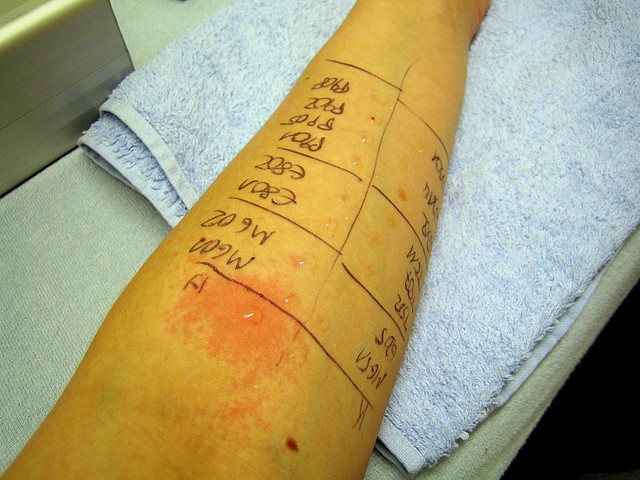
Editor’s Note: No website is designed to, and can not be construed to, provide actual medical advice, professional diagnosis or treatment to you or anyone. Elephant is not intended as a substitute for medical or professional advice, care and treatment.
For years, I have been suspicious of allergy testing methods, because I would often see patients come in with a laundry list of foods they were told to avoid for the rest of their life.
Then, six months later, the same allergy test would reveal a new list of reactive foods to avoid. Patients would come to me to help them not be so reactive to the so-called ‘allergenic’ foods, in part because they were running out of foods to eat based on the allergy tests.
Not surprisingly, in a study in the Journal of Pediatrics, allergy skin-prick tests were found to be grossly inaccurate. (1-3) In the study, they took 125 children from ages one to nine who were diagnosed with a food allergy from an IgE test. They followed up and gave these children food challenge tests, where a reaction to a certain food was tested rather than a skin-prick allergy test…and the results were shocking. Ninety-three percent of these children had no reactivity to the foods they were told to avoid for the rest of their lives. (2,3)
In an article in Scientific American, they reported on a case of a 15-month-old girl who was brought to the ER for swollen, crusted and weeping hands, arms, legs and abdomen.
The mother reported that her baby was vomiting from the standard infant formula, so they switched her to goat’s milk, but with no success. They then switched her to coconut milk and rice syrup. The pediatrician gave her an allergy test and found her allergic to coconut milk, which was then removed from her diet, and the symptoms worsened once again.
During a subsequent ER visit, the doctor diagnosed her with a rare nutritional disorder called, Kwashiorkor. She was fed through an IV drip until a pediatric allergist, Dr. J Andrew Bird gave her a food allergy challenge test, rather than the skin-prick test, and she was found to not have any reactions to the common allergens: milk, coconut, wheat, soy, eggs, fish, shrimp, green beans and potatoes. Her condition was diagnosed as a digestive imbalance that typically resolves on its own, the report said. (1)
The skin-prick food allergy test is where a person is scratched by a needle with a protein from the suspected food. The test is positive if the skin becomes swollen or irritated. The problem, according to another study, is that patients show skin reactions to allergenic foods in 50 to 60 percent of the tests—even if the person is not allergic to that food. This test has been the gold standard for allergies for 20 years.
Food sensitivities can be a complex problem, but even the best allergist knows that removing the allergenic food only removes the symptom, and never addresses the underlying problem. No doubt there are many factors to be addressed here, such as stress, worry, digestive issues, toxic or highly processed foods and real hypersensitivities. The key is to look deeper and not settle for a life sentence of foods that have to be avoided.
Read more on how to reset digestive strength here
References:
- Scientific American. An Overreaction to Food Allergies. Ellen Ruppel Shell. November 1, 2015
- The Journal of Pediatrics. David M. Fleischer, MD, S. Allan Bock, MD, Gayle C. Spears, PA-C, Carla G. Wilson, MS, Naomi K. Miyazawa, PA-C, Melanie C. Gleason, PA-C, Elizabeth A. Gyorkos, PA-C, James R. Murphy, PhD, Dan Atkins, MD, Donald Y.M. Leung, MD. DOI: http://dx.doi.org/10.1016/j.jpeds.2010.09.027
- Frontline Medical News in Pediatrics. ‘Shotgun’ skin prick testing for food allergy held flawed. November 4th, 2014.
Relephant Read:
The only Way to Know if You’re Allergic to Gluten.
~
Author: Dr. John Douillard
Editor: Catherine Monkman
Photo: Lindspetrol/Flickr
~


 Share on bsky
Share on bsky




Read 0 comments and reply